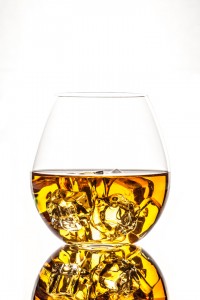Trending
Single Malt Scotch: Distilling the facts about scotch
December, 2015

| Chances are you know someone who’s recently channelled their inner scotch aficionado. With trendy new scotch bars opening up in many cities, scotch tastings are becoming popular evenings out. Experts consider single-malt scotch the premium variety, but what exactly is it? To help you get up to scratch on this superior scotch, here’s what you need to know about the whisky’s distillation processes, its characteristics and flavours, as well as tips for serving and enjoying it. |
The Single and the Malt
Scotch refers to any whisky produced entirely in Scotland, and many varieties are available, such as blended grain, blended malt, blended, single grain and single malt.
The “single” in single-malt refers to two things: a single distillery and a single grain—malted barley. The malting and distilling processes consist of several steps. Germinate the barley until the starch becomes malt sugar. Dry and grind the malt. Extract the sugar by adding hot water and then leave the liquid to ferment. Distill the fermented liquid twice in copper stills and then mature it in wooden casks for at least three years.
The Cask and the Conversation
Single-malt casks are made from mature European or Spanish oak (Quercus robur) or American oak (Quercus alba). Often the cask has been previously used in bourbon or sherry production, which lends unique tastes to the liquor. The interaction between the spirit and the wood during maturation is often called “the conversation.”
The Craft
Although making single-malt scotch seems simple, it’s an art form. The flavours of the finished product depend on the knowledge and skill of the distiller and how that person uses those tools to balance the other factors that influence taste. Those factors include the shape of the still, the quality of the water, the characteristics of the barley, the fermentation and maturation times, and the subtleties of the distillation process.
The Flavours
The final flavours of a single-malt scotch are classified on two scales: light to rich and delicate to smoky. Single-malts have whispers of fresh fruit and citrus on the light end and have notes of vanilla and chocolate on the other. On the delicate side, fresh floral or grassy notes are evident; on the smoky side (which comes from peat if it was burned during malting), hints of light toast or scented smoke are typical.
The Enjoyment
Like any scotch, a single-malt is served neat—from the bottle without chilling or mixing—or with water, with ice or with a mix. Water changes the scotch’s composition and releases its subtle nuances. The best water is soft tap water without added chemicals. Add a little at a time until you find the best balance for your palate. Ice dilutes the scotch and may reduce its aromas and flavours. Mixes, too, can mask the tastes, so many experts suggest that a blended scotch is more suitable for mixing.
To get the most out of your dram (3.7 mL) of single-malt scotch, experts also suggest that you sip from a clear, undecorated glass that narrows near the top. This will direct the aromas to your nose and keep the flavours from escaping so that you can enjoy them as the distiller intended. t8n
By Numbers
40%: the minimum alcohol by volume required for all varieties of scotch
60%: the amount of the flavour of a scotch that comes from the characteristics of the cask
100%: the amount of grain in a single-malt scotch that must be malted barley
Through the Years
3 years + 1 day: the minimum time a single-malt must mature in the cask
100 years: the age of the mature oak typically used for a cask
500 years: how long scotch has been produced in Scotland











